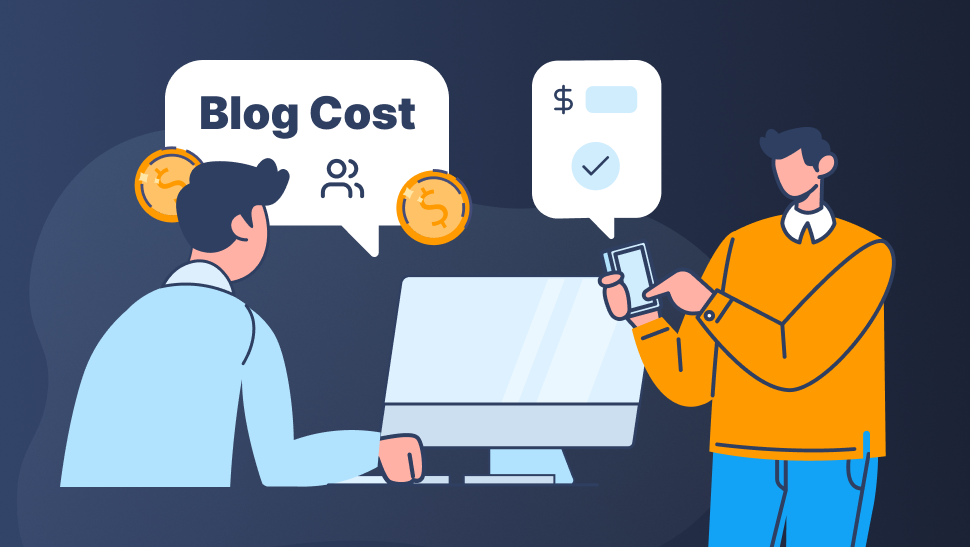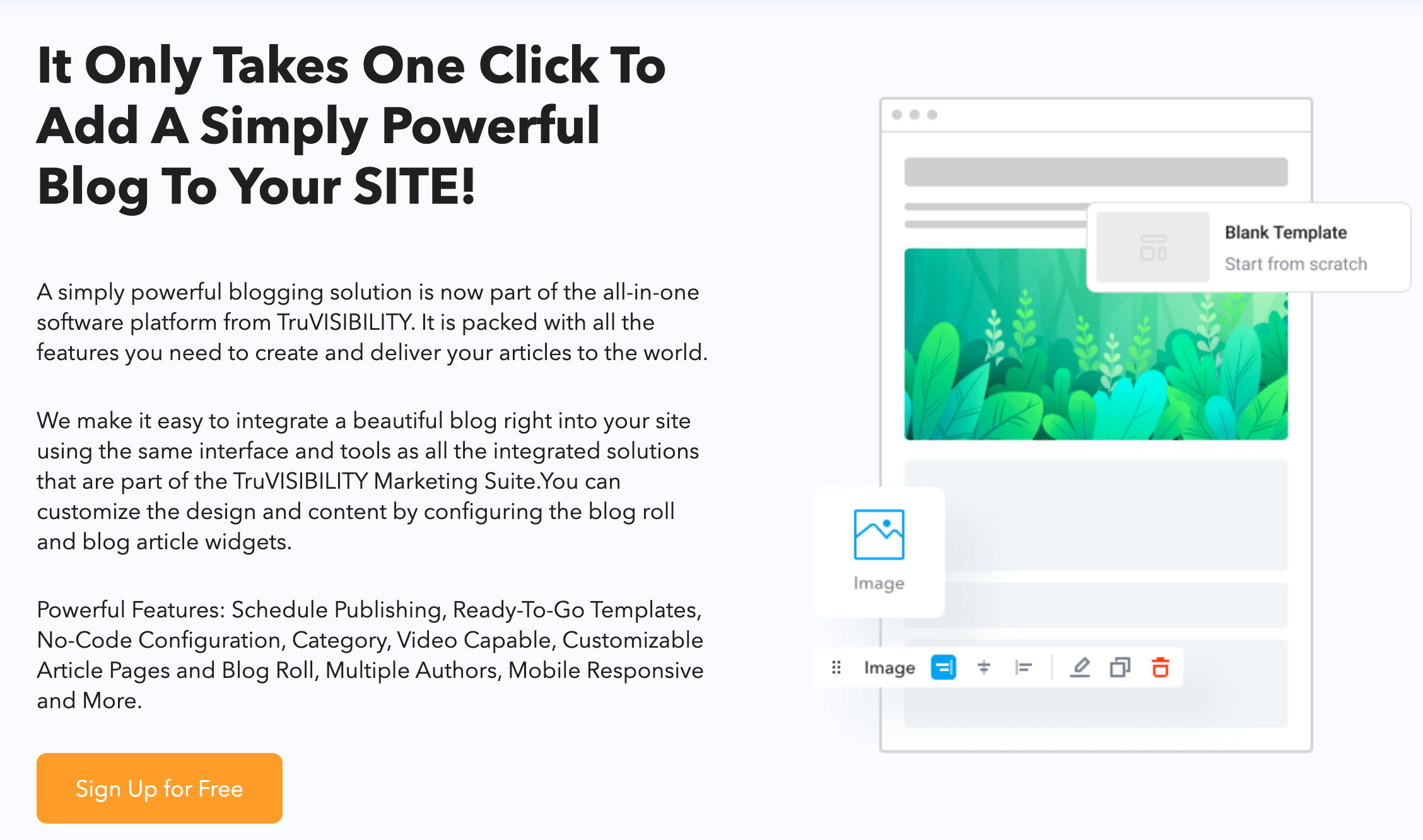Blogging has become an integral part of content marketing for businesses. It's a powerful tool for building brand authority, driving website traffic, and engaging with your target audience. However, when it comes to starting a blog for your business, there are costs to consider. In this comprehensive guide, we'll break down the expenses involved in launching and maintaining a business blog, offering insights into what to budget for and how to make cost-effective choices.
Table of Contents
- Why Start a Blog for Your Business
- Initial Setup Costs
- Ongoing Costs
- Strategies for Cost-Effective Blogging
- Optional Investments to Enhance Your Blog
- Conclusion

Why Start a Blog for Your Business
Before delving into the costs of starting a blog for your business, it's crucial to understand the benefits. Blogging offers numerous advantages, such as:
- Building Authority: A well-maintained blog helps establish your business as an authority in your industry. By sharing valuable insights and expertise, you gain the trust and confidence of your audience.
- Driving Traffic: Regular blog posts can drive organic traffic to your website. Search engines favor fresh, relevant content, and blogging is an effective way to improve your site's SEO.
- Engaging with Customers: A blog allows you to interact with your customers. You can respond to comments, address queries, and foster a sense of community around your brand.
- Content Repurposing: Blog posts can be repurposed into various content formats, such as ebooks, webinars, or social media posts, extending the value of your content.
TruVISIBILITY is one of the top platforms for integrating your website, chatbots, landing pages, email, and blog page all in one place. Check out how you can use TruVISIBILITY’s Messaging app to repurpose a blog article into a newsletter!
- Lead Generation: Blogging can help generate leads and build your email subscriber list. You can offer gated content like ebooks or whitepapers in exchange for visitor contact information.
- Showcasing Products or Services: Blogs provide an opportunity to showcase your products or services in an informative and non-salesy manner.
Initial Setup Costs
There are a few things to consider in the initial setup stage of your blog. We'll go over the cost of each and what every step encompasses.
Domain Name and Hosting
Cost: Typically, domain registration costs around $10 to $20 per year. Hosting expenses vary depending on the provider and plan. Shared hosting plans can start at $2 to $10 per month, while more robust options can cost $20 to $50 per month or more.
Recommendation: Go for a reputable hosting provider that offers good customer support and scalability options as your blog grows.
Content Management System (CMS)
Cost: Many popular CMS platforms are free to use, with WordPress being a prime example. However, you may need to budget for premium themes or plugins, which can range from $20 to $100 or more.
Recommendation: WordPress is a cost-effective choice, but invest in premium themes or plugins only when they provide clear benefits for your blog.
Design and Themes
Cost: Design costs can vary significantly. You can find free or low-cost themes, or you might hire a professional designer, which can cost anywhere from a few hundred dollars to several thousand, depending on the complexity of your requirements.
Recommendation: Start with a free or affordable theme and invest in design as your blog grows.
Essential Plugins
Cost: While many essential plugins are free, some may have premium versions with advanced features. Budget around $50 to $100 for premium plugins if needed.
Recommendation: Explore free plugins first and consider upgrading to premium versions if they significantly enhance your blog's functionality.
Ongoing Costs
Some costs of a blog pop up as needed. And other costs are more regular, such as monthly payments. Let's go over what some ongoing costs could be for the upkeep of a great blog page.
Content Creation
Cost: Content creation costs vary based on the type of content you produce and whether you hire in-house writers, freelancers, or agencies. Freelancers might charge $25 to $100 per hour or per article, while agencies may have fixed monthly fees.
Recommendation: Begin with in-house or freelance writers and gradually scale your content creation efforts as your blog grows.
Want to see the types of content you can add to a blog for free? You only pay as your business grows with TruVISIBILITY. Their Blogs app and all its tools and widgets are free to use - whether you start off paying for it monthly or not.

Promotion and SEO
Cost: Budget for tools and services to aid in SEO and promotion efforts. These expenses can range from $50 to $500 per month, depending on the complexity of your strategy.
Recommendation: Start with basic SEO tools and expand your budget as your blog's reach increases.
Maintenance and Updates
Cost: Costs for maintenance and updates depend on factors like website complexity, the need for security plugins, and backup solutions. Budget between $20 and $100 per month.
Recommendation: Prioritize security and backup solutions to prevent costly issues.
Strategies for Cost-Effective Blogging
To keep blogging costs in check, consider these strategies:
Content Planning: Develop a content calendar to avoid creating content haphazardly. This ensures that you make the most of your content creation budget.
Content Repurposing: Repurpose blog content into other formats, such as infographics, videos, or podcasts, to maximize its value.
DIY Skills: Learn essential skills like basic web design, SEO, and content writing to your audience.
By not paying for specialists to manage your blogging page and learning how to do basic web design, SEO, etc., you can save money when starting up your blog page.
Optional Investments to Enhance Your Blog
Premium Themes and Plugins
Cost: $30 to $200+ (one-time) or $10 to $50+ (per year)
Premium themes and plugins can enhance your blog's functionality, design, and user experience. They often come with a one-time or annual licensing fee.
Professional Graphics and Media
Cost: Varies
High-quality visuals and media can enhance your content. Costs depend on your design needs and whether you hire a professional designer or use stock images and media.
Email Marketing
Cost: $0 to $50+ per month (email marketing software)
Building an email list is a valuable strategy. Email marketing software is available at various price points, depending on your list size and features.
Content Management System (CMS)
Cost: $0 to $50+ per month
Many businesses use CMS platforms like WordPress for blogging. Costs can include hosting, premium themes, and plugins for added functionality.
Social Media Management
Cost: $0 to $100+ per month
Tools for managing and scheduling social media posts can streamline your marketing efforts. Prices vary based on the features and platforms you need.
Paid Advertising
Cost: Paid advertising, such as Google Ads or social media advertising, requires a separate budget. Costs depend on the platform, your campaign objectives, and your competition.
Start with a modest advertising budget and adjust it based on campaign performance.
Conclusion
By utilizing social media management, paid advertising, SEO keywords, and more, your business blog can vary in cost but will surely be worth the cost by bringing in more visibility to your product or services.
Whether you want to run a blog as your main source of online content, such as a cooking blog, or you want to add a blog page to your online business website, you can quickly see the benefits blog articles have to your online presence.
TruVISIBILITY is passionate about helping businesses gain site visitors. See how you can create a free blog with TruVISIBILITY’s Blogs app. With Blogs, you can write your content, add links, write a meta description, publish it, and much more.
Want to receive more articles?
Sign-up for our weekly newsletter to receive info that will help your business grow



